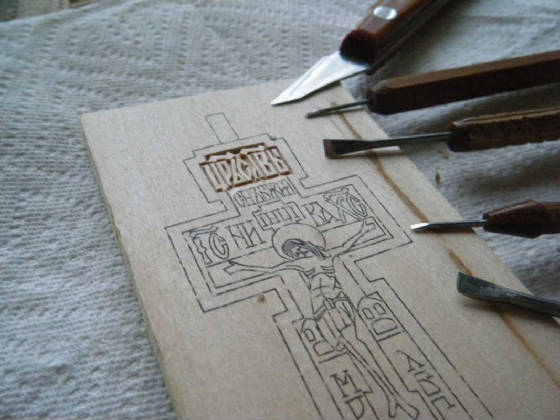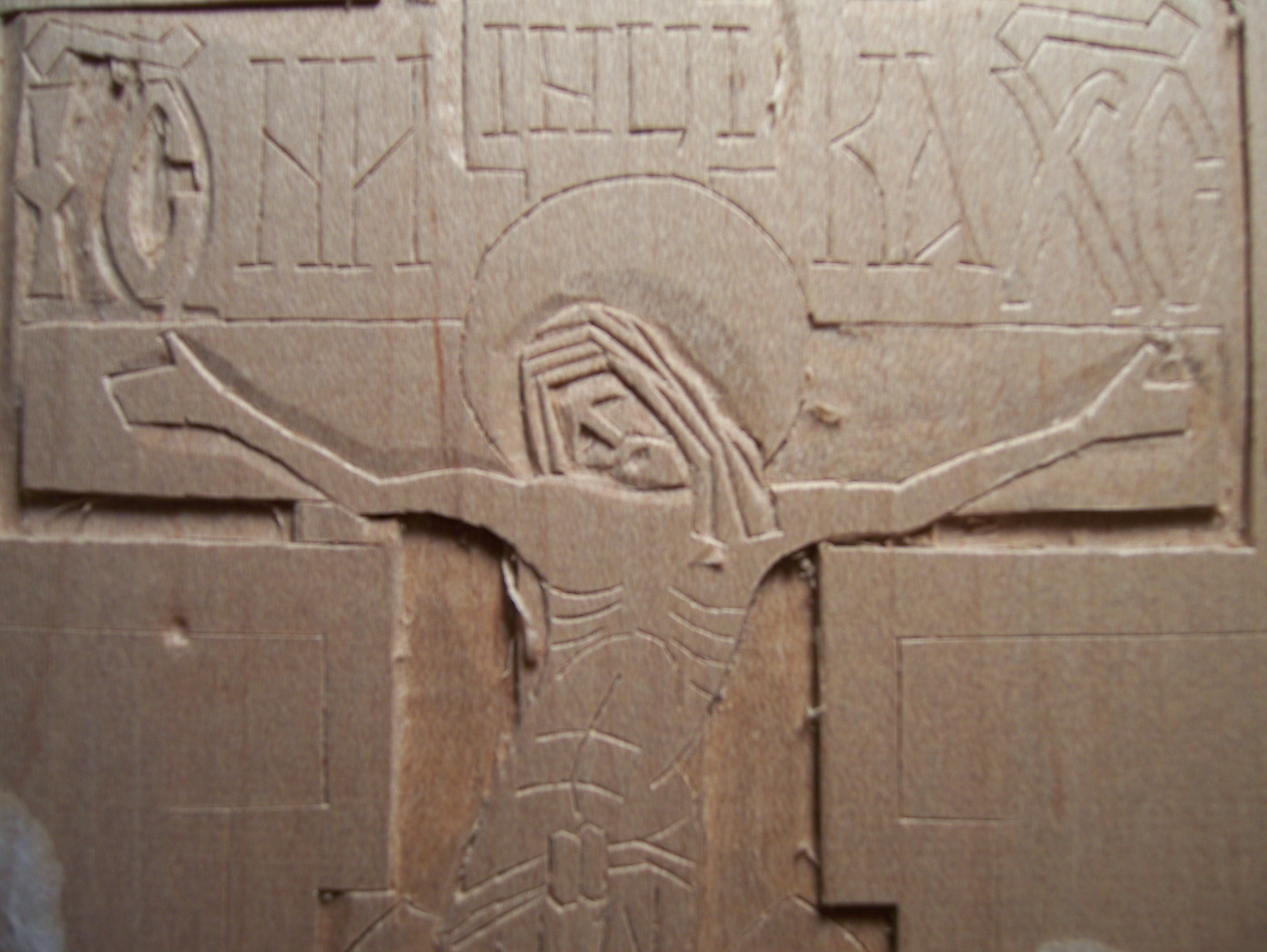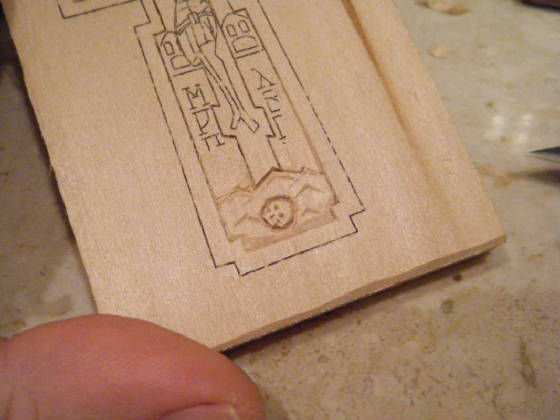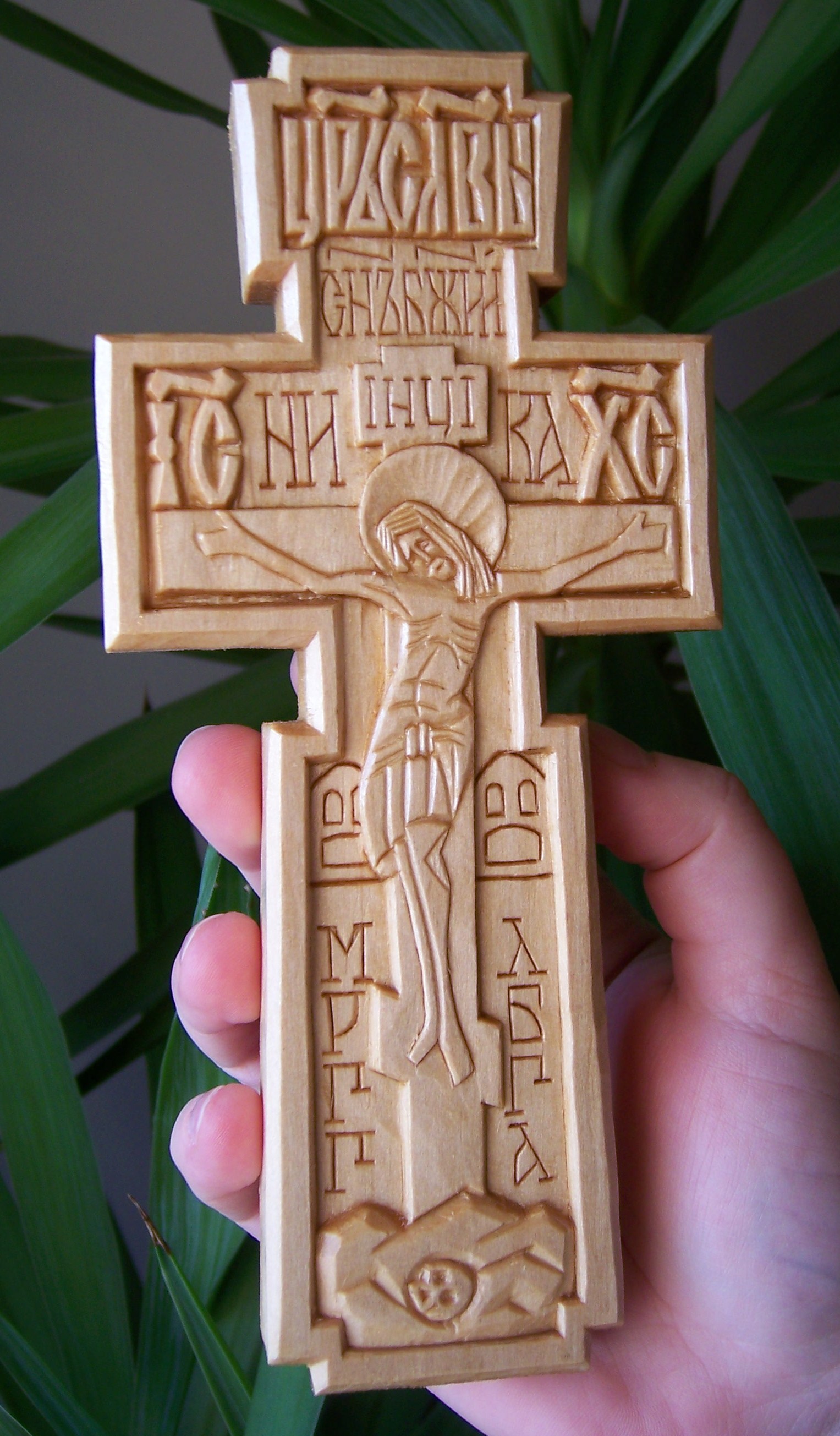|
So, how do you carve a Russian Orthodox cross like the one I made? Well, first you'll need really sharp knives and chisels.
Second, you'll need a pattern. Feel free to trace the cross I've made. Use some tracing paper and make the lines nice and
dark. You can see that I glued the pattern to the wood. Third, you'll need some wood. For this cross, basswood or linden
wood works very nice. You could use any wood you like, but a really hard wood isn't the best place to start. I don't
recommend pine because it has alternating bands of hard and soft wood in it... also it sometimes has pockets of sap.
| Step One: Put the pattern on the paper. |

|
| Click the picture to see it full size. |
As you can see from the picture, I used heat from an iron to transfer the pattern from a photocopy
to the wood. I'll then take a knife and cut on these lines of the pattern. After that, I carve away the wood
that isn't the letters. To do this I make those knife marks deep by pushing the chisel straight down into the wood. These
serve as stop cuts and the keep the wood from splitting as I carve down the background. I'll make stop cuts, carve down to
the depth of them, and then make another round or two of stop cuts and carve down to the new depth before I am finished. This
makes the letters stand proud of the surface of the wood. It is delicate work, so you'll need to go easy. You don't want to
cause the wood to split.
| Step Two: Carve Through Pattern. |

|
How can you get into all the narrow spaces? Well, one tool I use is made from a 1/16th inch drill bit. To make a tool
like this, use the drill bit to drill into a dowel of wood. Leave the drill bit in the wood and sharpen the shank of it. If
it moves, use a little superglue to hold it in place.
The first chisel I ever used was one I made from an old steak knife. The stainless steel was approximately 1/32" thick
and flexible enough to make a good chisel. I used an emery cutoff wheel in a Dremel rotary tool to cut the steel to length.
I then used a grinding wheel to give shape to the chisel... to make it narrower than it was originally. I kept grinding both
sides to make the chisel 1/8" wide. Then, I sharpened the chisel on a grinding stone. I have hundreds of dollars worth of
knives and chisels, but I still use that homemade chisel. It doesn't stay sharp as long as the professional chisels do...
but it still does a good job.
| Step 3: Carve the Cross and Corpus |

|
This is a close-up of the face in the same design, but from a different cross. Isn't it amazing how after some simple
carved features the face begins to appear? You'll want to carve shallow designs at first. If they look right, carve them
deeper. If they don't, you'll get more chances to make them right as you carve deeper. If you are having a problem with one
feature of the carving... Stop. Move to another piece of wood and practice until you get it right. Then move back to work
piece. Also, when you are tired. Stop. If you don't, many times a good carving will be ruined.
| Step Three: Cave the Skull of Adam |

|
This is the skull at the bottom of the cross. The ridges in the rocks at the foot of the cross are made with a V gouge.
An alternative would be a sharp knife cutting the wood at opposing angles to make the v grooves. In this cross, some letters
are relief cut (you cut away the wood around them). Some letters are just cut into the surface of the wood. They don't show
up strongly when you make them. When you finish the cross with Tung oil or Polyurethane, the cuts will darken immediately.
They really show up at that time. Unfortunately, any stray cuts will also get highlighted.

|



